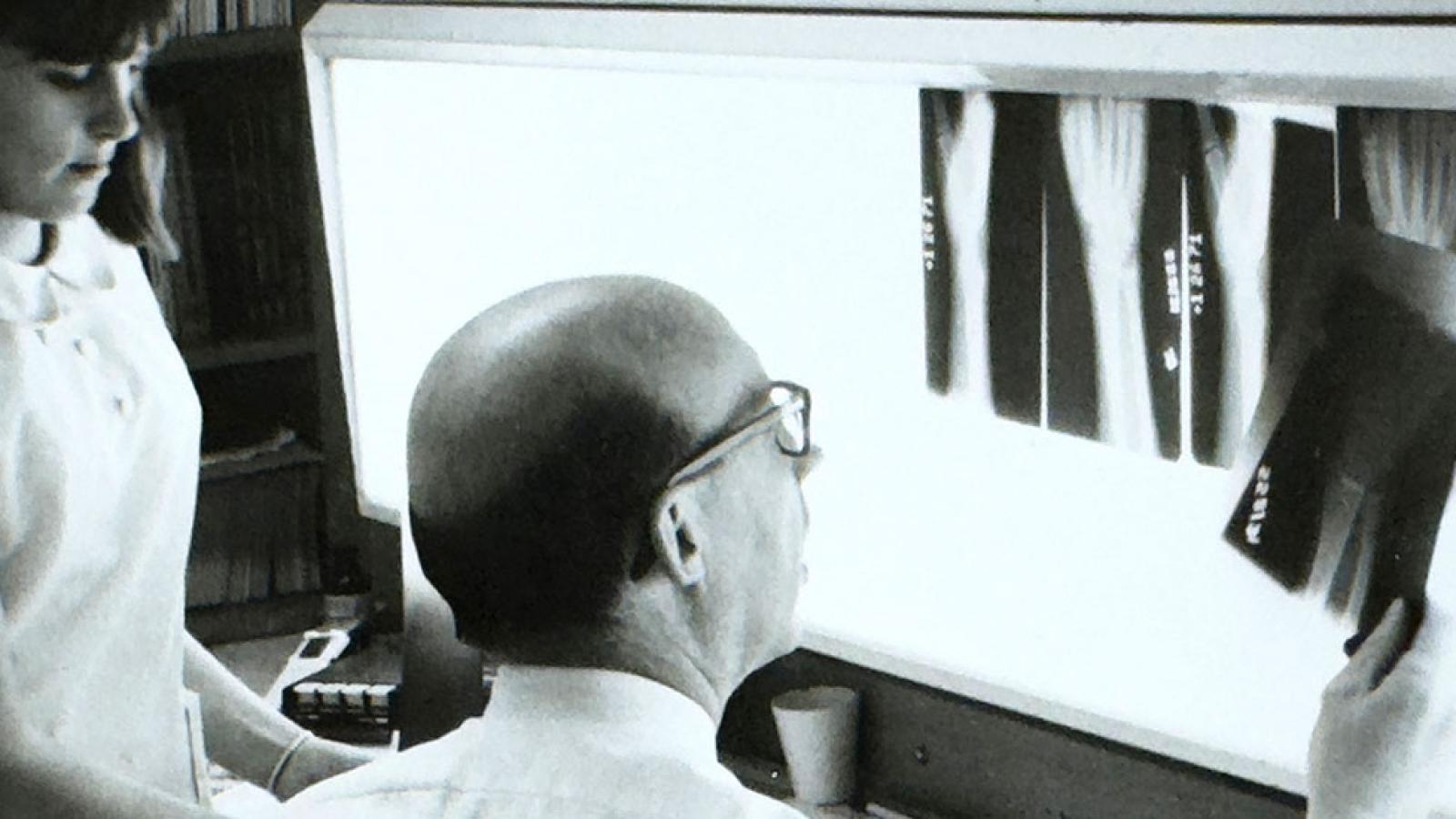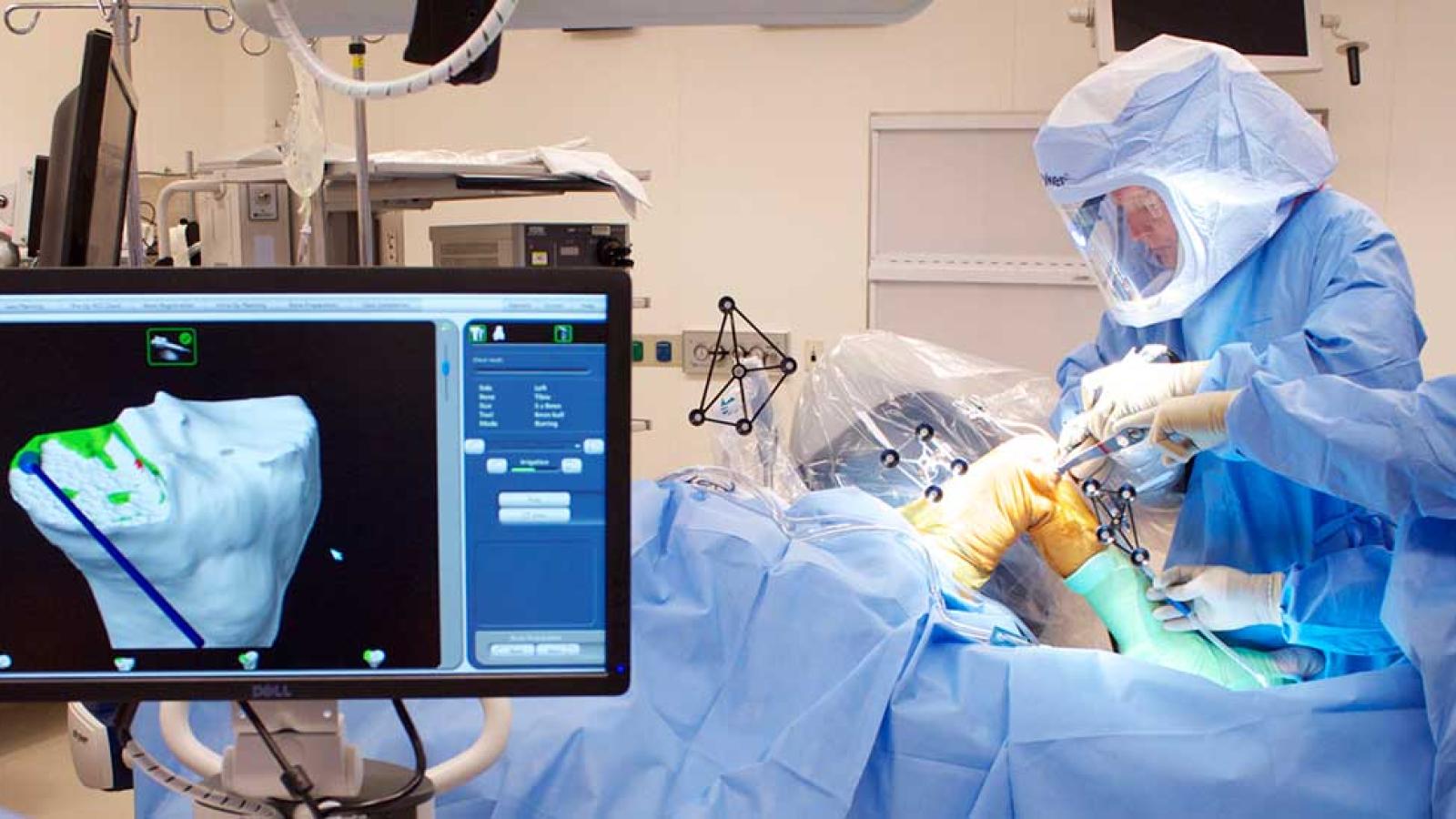Celebrating 100 years, Guthrie Orthopedics has redefined care since 1925. From pioneering joint replacements to training future leaders, the department's legacy of innovation, education, and patient-centered care continues to shape orthopedic medicine. Explore the milestones that have defined a century of exceptional achievements and community impact.
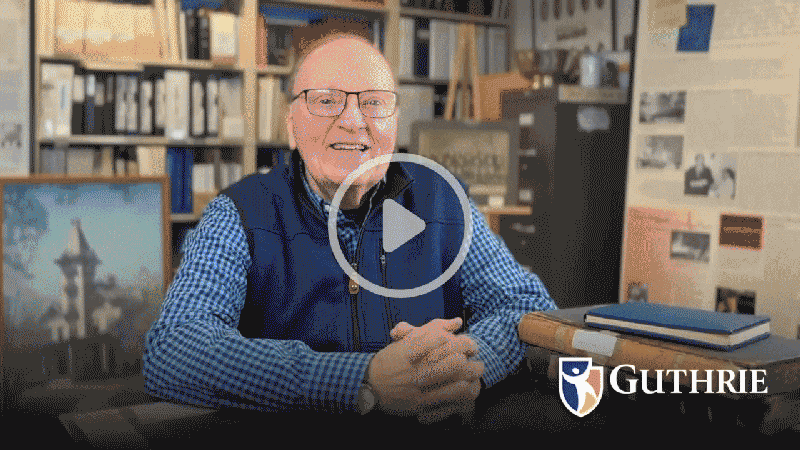
Guthrie Orthopedic Surgery Chiefs Throughout History

1925-1928
Harold W. Smith, MD
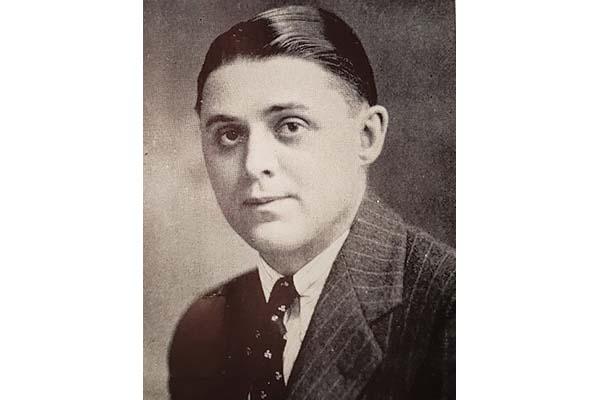
1939
Thomas A. Outland, MD
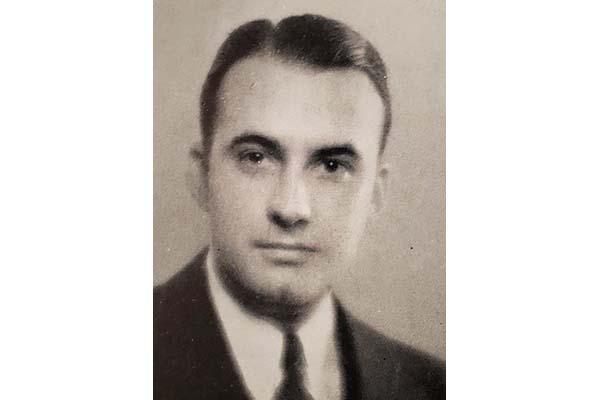
1940-1945
Paul H. Harmon, PhD, MD
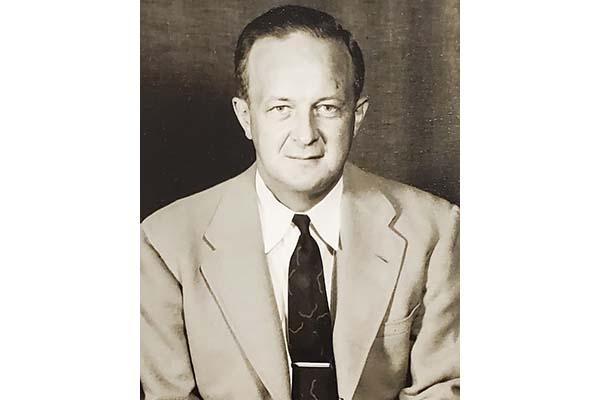
1946-1950
George Hammond, MD

1951-1978
Dan R. Baker, MD
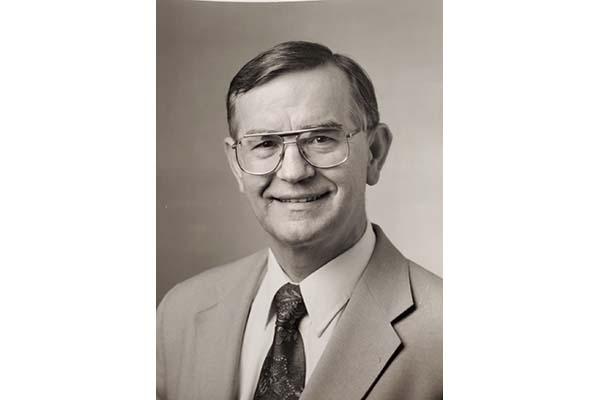
1978-1996
Roy Wert, MD
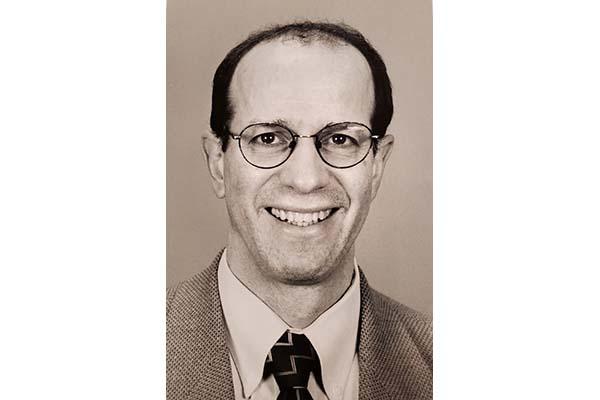
1996-2010
Robert E. Cohen, MD
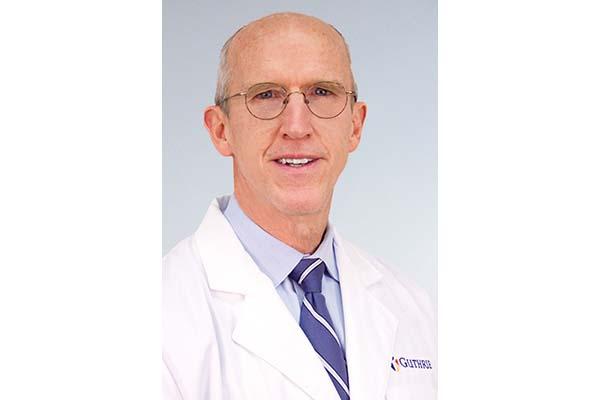
2013-2014
William Ward, MD
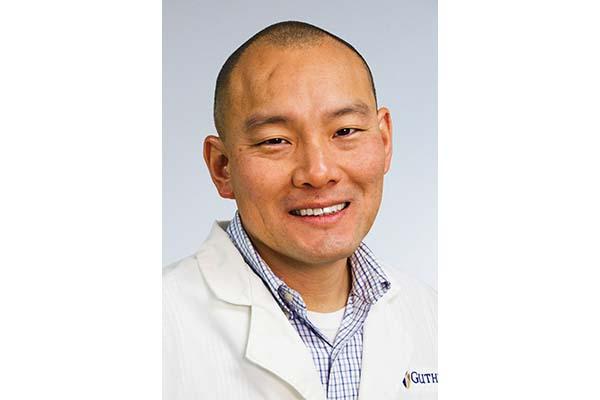
2016-Present
Joseph Y. Choi, MD, PhD, MHA
Trust That Spans a Century
Guthrie Orthopedics’ story is one of dedication, innovation, and unwavering commitment to our community. As we honor this remarkable history, we remain focused on shaping the future of orthopedic care. With advancing technologies, personalized treatments, and a promise to always prioritize our patients' well-being, we look forward to continuing this legacy for generations to come.
1885 – Robert Packer Hospital is founded in Sayre, Pa. The hospital is dedicated to serving a region of industrial workers and railroad employees.
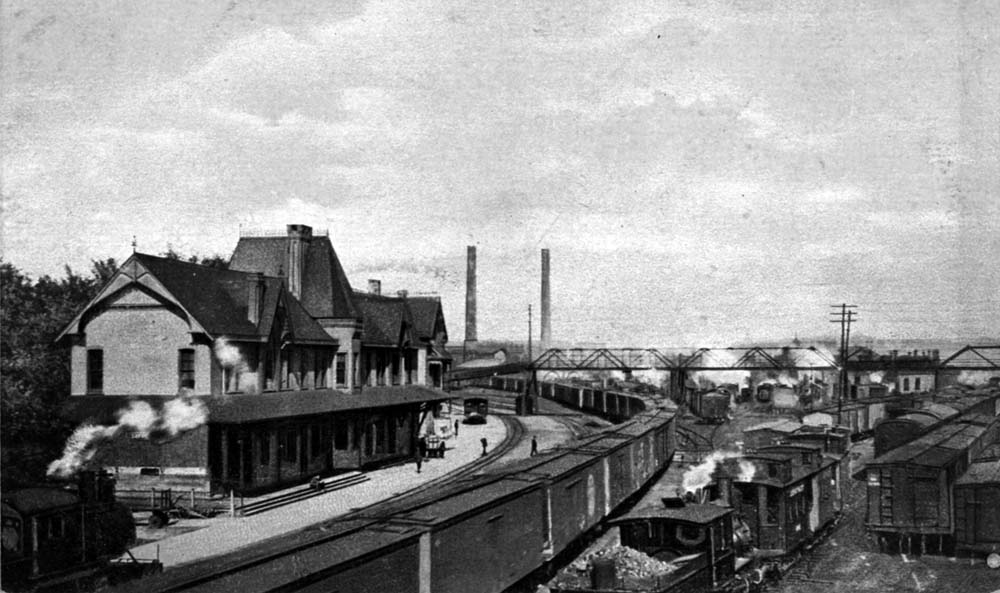
.
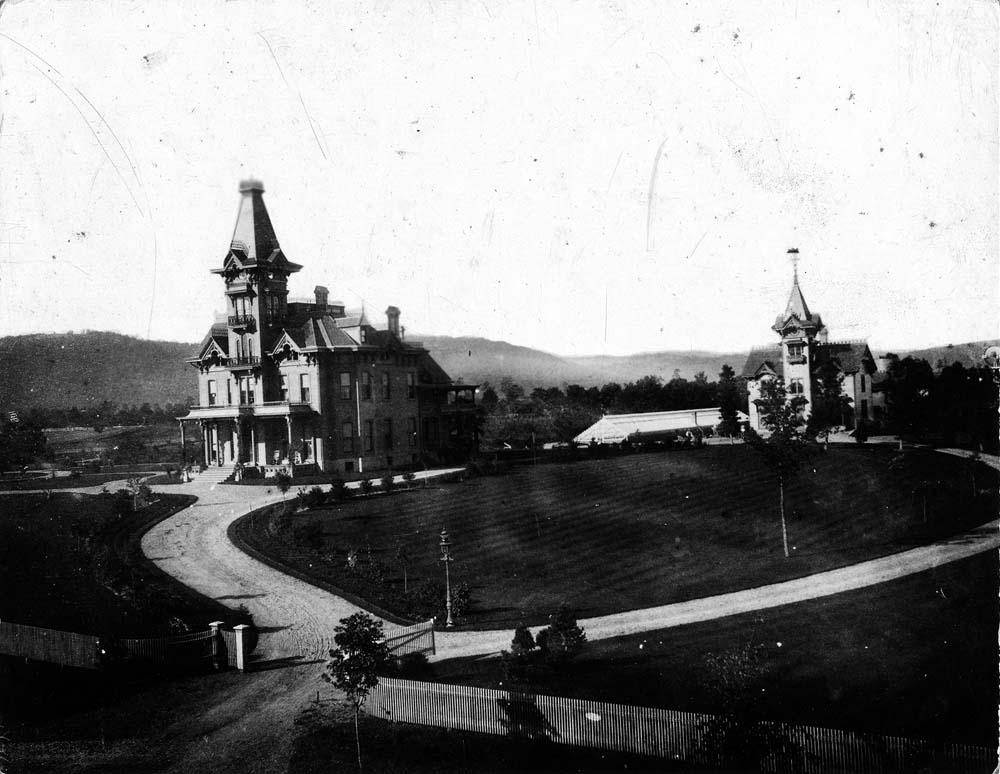
1910 – Donald Guthrie, MD, is elected Superintendent, Physician, and Surgeon of Robert Packer Hospital. Inspired by his training at Mayo Clinic, Dr. Guthrie brings to life a vision of providing integrated, high-quality care in a rural setting, and founds the Guthrie Medical Group over the next few years.
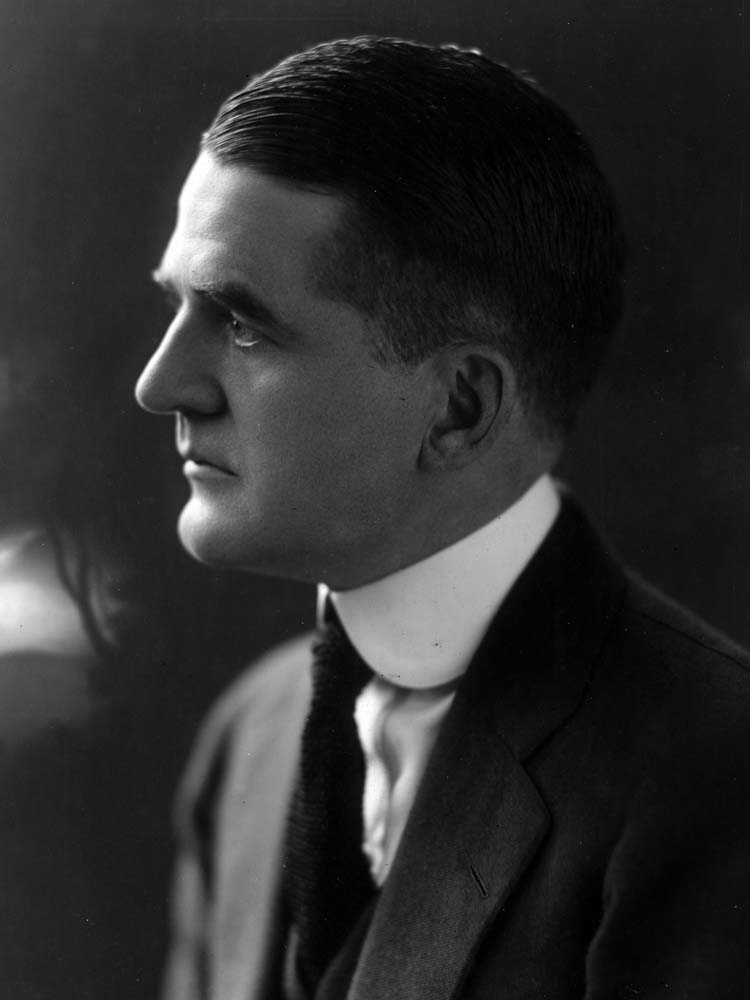
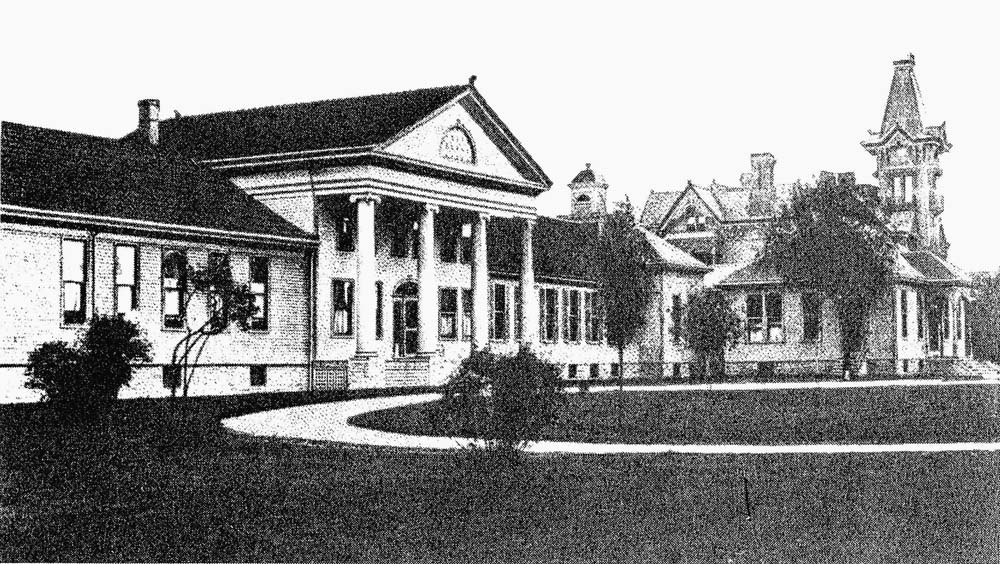
1925 – An Orthopedic surgery department is established in November at Robert Packer Hospital in Sayre, Pa., under the leadership of Harold Smith, MD. Prior to this time, surgical cases requiring orthopedic attention were under the care and direction of the general surgeon.
1926 – Over 30% of orthopedic cases treated this year are related to congenital club foot.
1928 – Navy veteran Thomas Outland, MD, becomes chief of the department, a role he would occupy for 12 years.

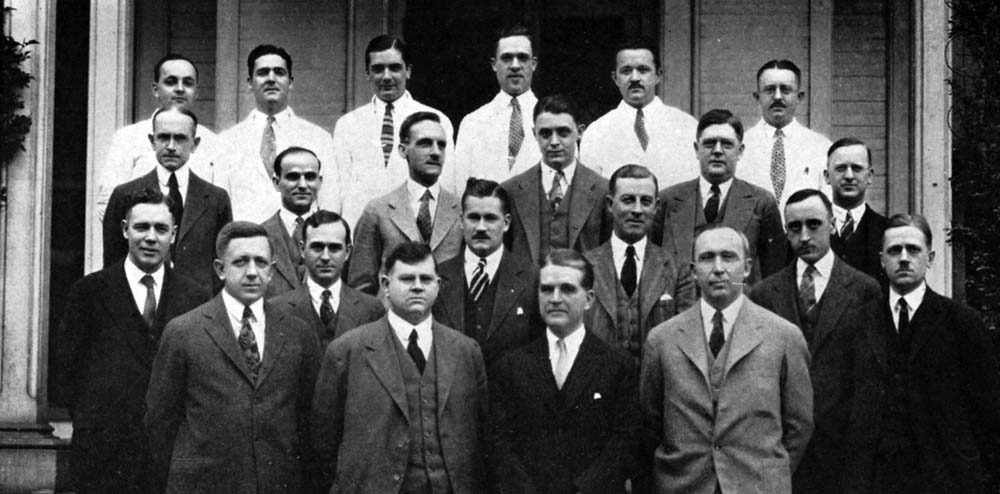
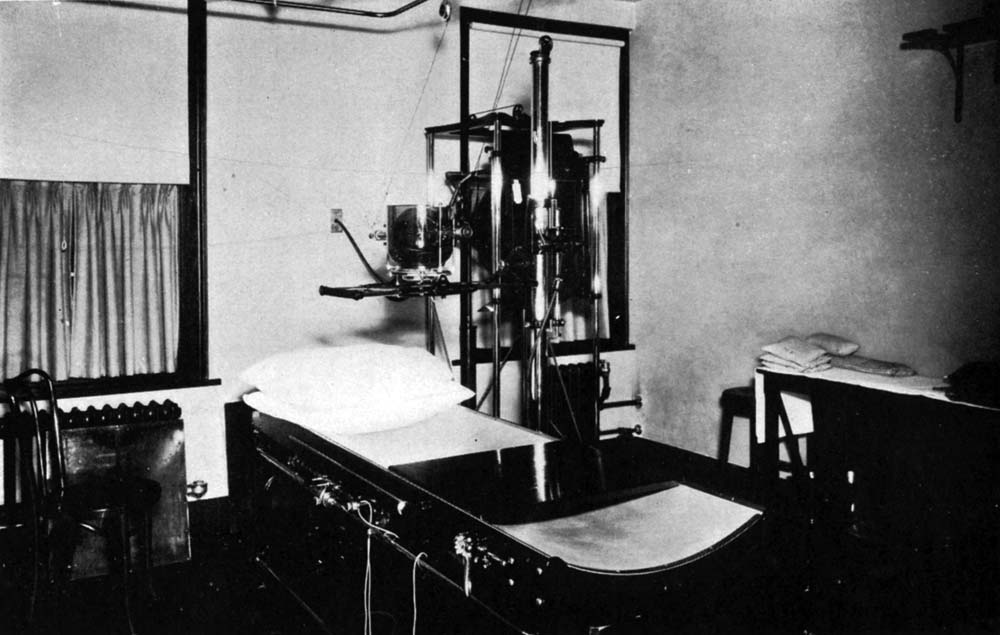
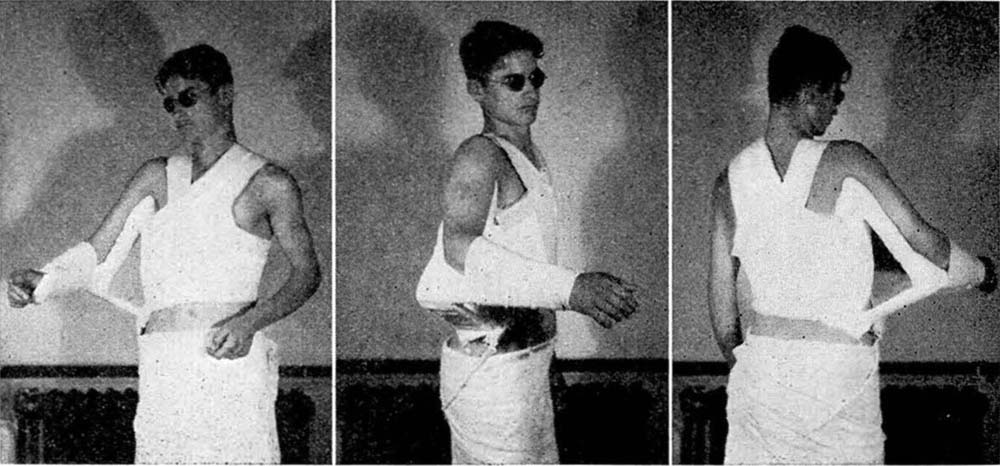
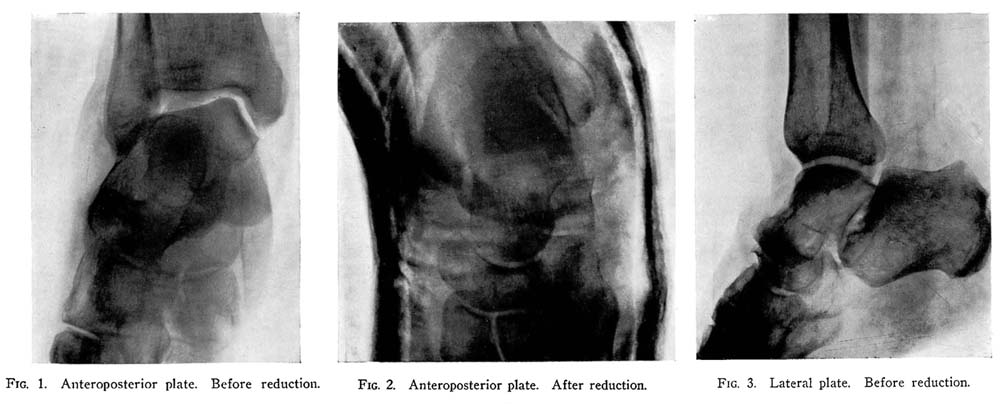
1934 – After a devastating fire the previous year and the subsequent opening of a new state-of-the-art hospital, our orthopedic team expands with some of the most advanced operating suites in the country.


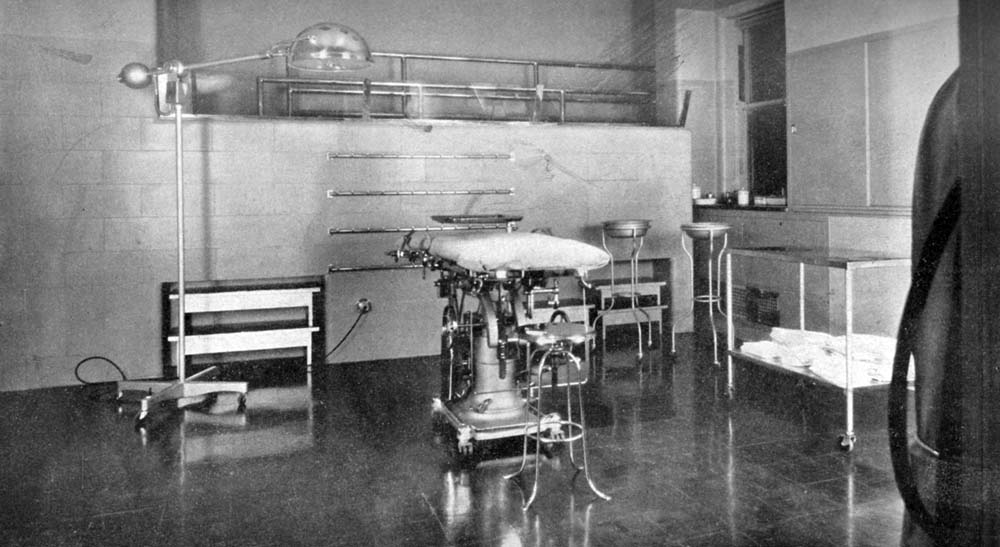
1940 – Paul Harmon, MD, becomes chief. He develops a strong interest in treatment of degenerative arthritis, and he works to investigate and publish information on artificial materials that could be used to improve the condition. His work with the plastic cup in the hip joint stands out as some of the earliest research into materials for joint replacements, an area that would define the field for decades.
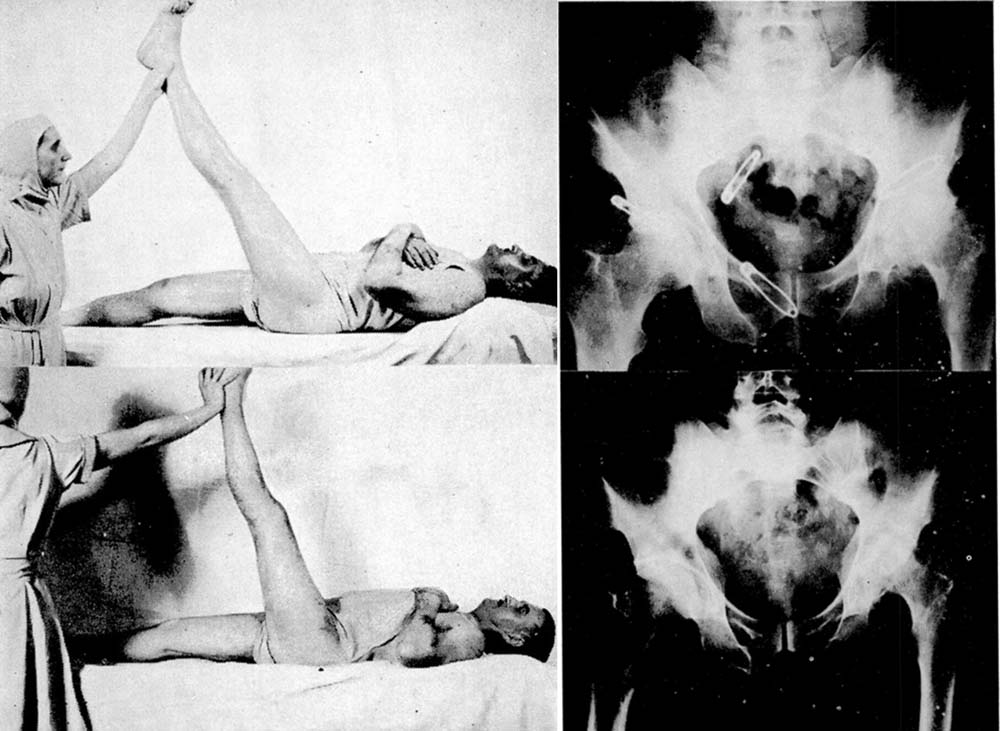
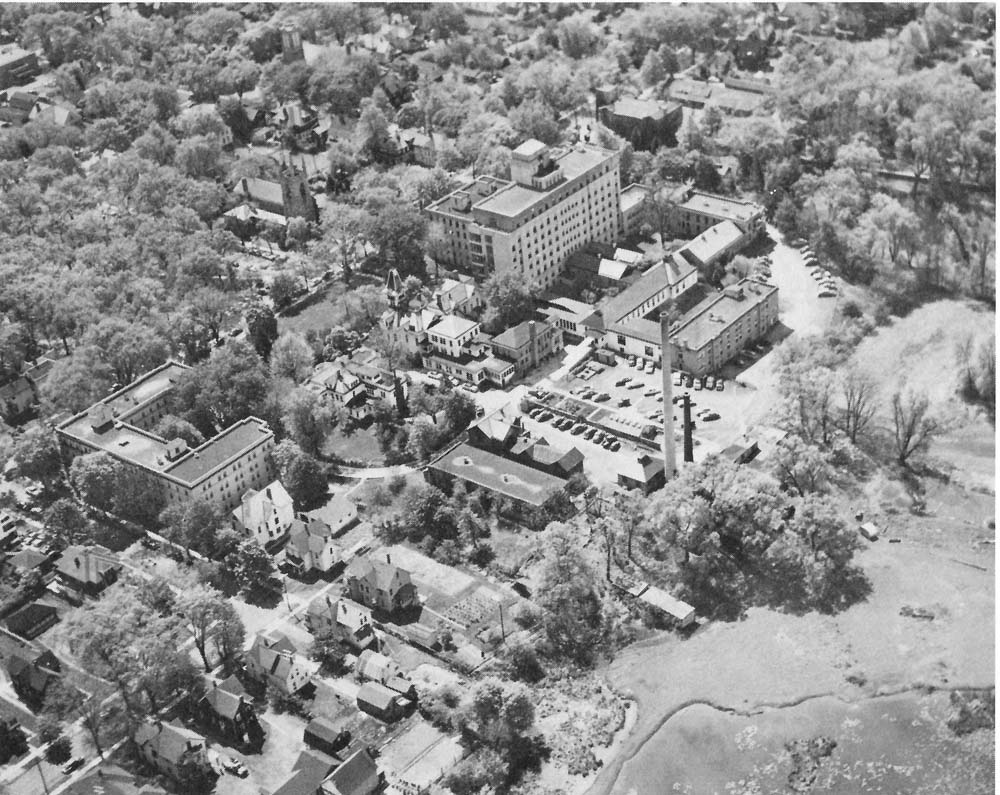
1942 – Dr. Harmon is cited in Reader’s Digest article for research on polio. He continued to publish research on the epidemic, including a summary on the local 1944 outbreak.
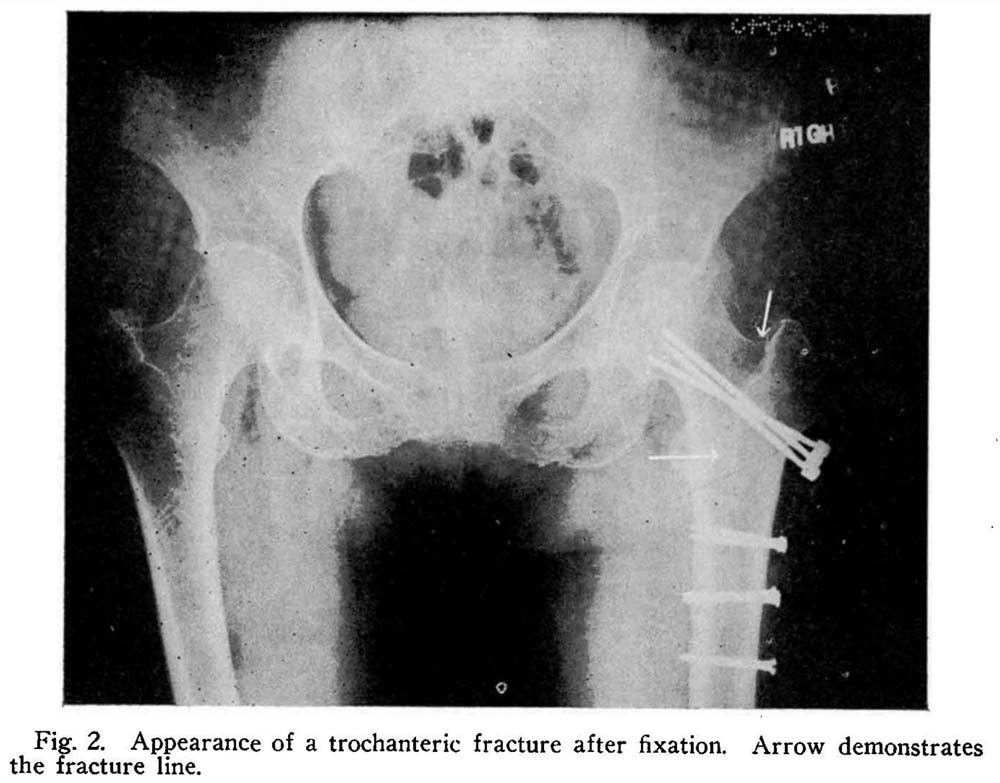
1946 – George Hammond, MD, becomes chief. Under his leadership, Guthrie Orthopedics begins conducting state-funded clinics traveling around the region, historically known as the Crippled Children's Clinic, with the purpose of treating those ages 21 and younger with congenital or acquired deformities of the spine or extremities, whose families couldn’t afford to travel for specialized care.
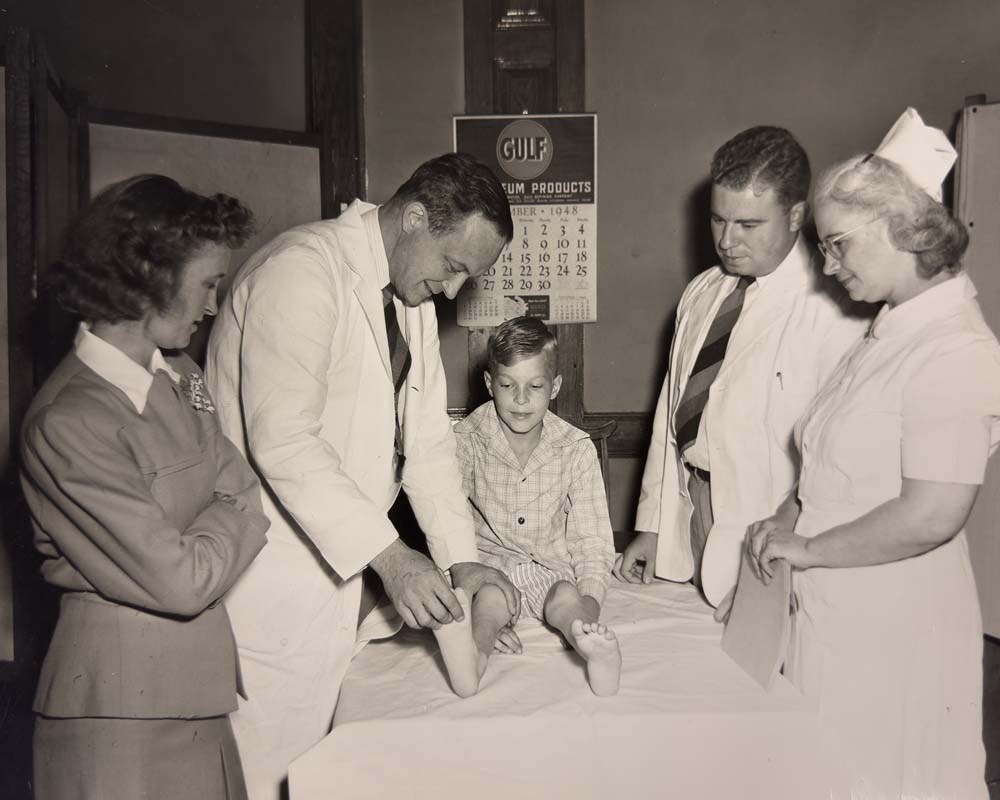
|
Traveling Clinic for Orthopedic Deformities “Crippled Children’s Clinic” As described by Dr. Dan Baker in the January 1958 edition of The Guthrie Clinic Bulletin, “A large number of the children who come to the Robert Packer Hospital and Guthrie Clinic for orthopedic care are referred from the free clinics conducted by the state of Pennsylvania in this geographical area. Biannually, the orthopedic surgeon and other members of the orthopedic service at this institution conduct orthopedic "diagnostic clinics" in Bradford, Tioga, Potter and Susquehanna counties. Children from certain portions of Wayne, Sullivan and Wyoming counties also attend. These clinics are open to the public for diagnostic services. Children to 21 years of age are admitted. The clinics are known as "Crippled Children's Clinics" but are now being broadened in scope to include pediatric as well as orthopedic diagnostic services. Other personnel in attendance include: an orthotist, a shoe fitter, physiotherapist, occupational therapist and dietician. All arrangements for the clinics are handled by the state nurses working in the respective counties. Children are referred to the clinic by their family physicians. At the conclusion of each examination, recommendations are made for specific treatment or for further diagnostic studies. Cases requiring x-rays and other laboratory studies are referred to the Robert Packer Hospital and Guthrie Clinic outpatient orthopedic department. Cases requiring corrective orthopedic surgery are admitted to the orthopedic service at the Robert Packer Hospital. Frequent consultations are arranged with members of the pediatric, neurosurgical and surgical departments of this institution in their respective outpatient clinics. … The number of children examined has increased gradually so that the total in 1955 is almost double the total for 1951. This increase in number is found not to be due to a greater number of congenital deformities or to the complications of serious crippling diseases such as poliomyelitis, but stem from an increased awareness on the part of parents, pediatricians and the physicians conducting school examinations of minor foot and leg deformities.” |
1946 – The Orthopedics and Physical Therapy departments move from the third floor of Robert Packer Hospital to the first floor, behind the X-ray department.
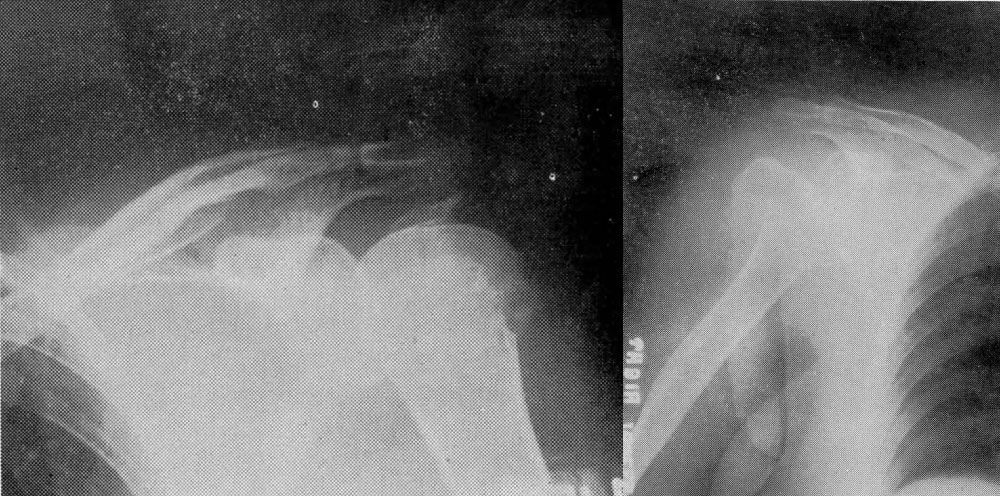

1950 – A bone bank is established – a deep freeze unit to preserve bones until an opportunity arises for their use in repair of bone defect.
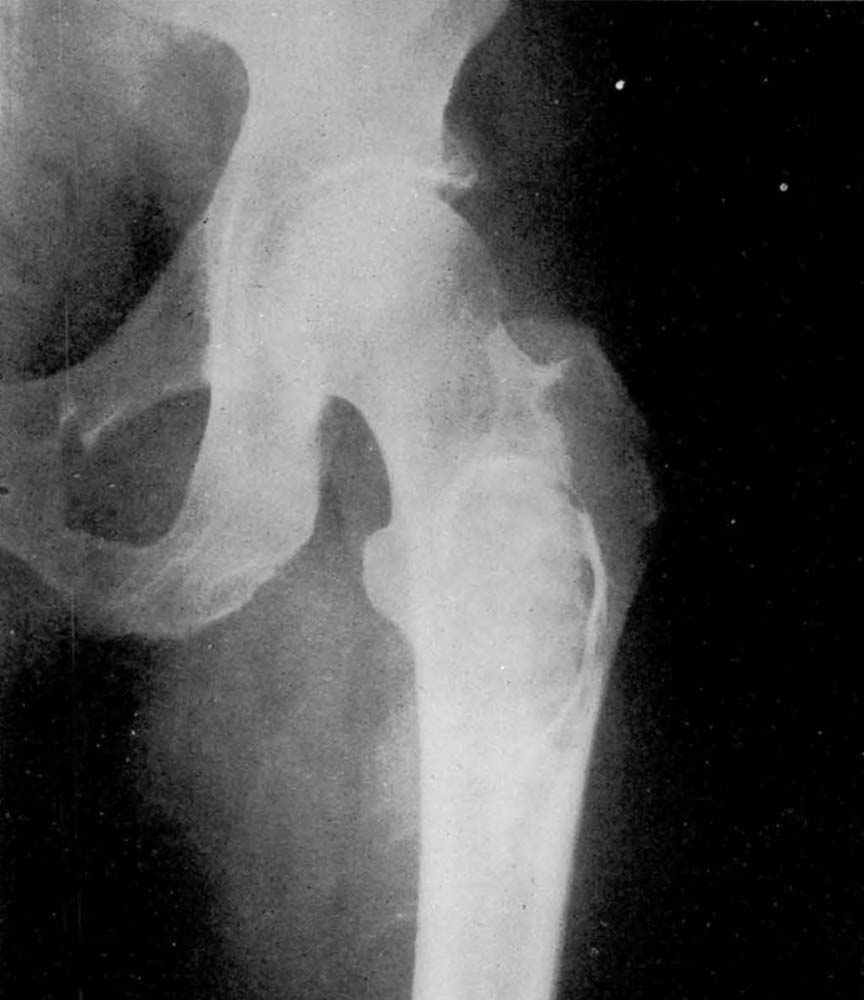
|
Bone Bank Established As stated in a 1950 article featured in The Evening Times, "Preparation of the bone for the bank calls for detailed handling such as taking laboratory cultures for sterility and to eliminate infectious matter. The negative culture bone grafts are placed in ordinary glass jars that have been sterilized for 45 minutes, capped air-tight, and labelled with date, patient's name, age, a number, the surgeon's name and the diagnosis. The deep freeze is a standard unit that is kept at a constant minus 10 to minus 20 degrees Fahrenheit. It has three compartments. The first contains bone grafts that are potentially useable but have not been reported negative as yet by the bacteriological laboratory; the second compartment has bones reported negative after about four to five days culture; the third has bone specimens reported positive but not yet discarded as they are ongoing culture studies. Each graft having a positive culture must have three consecutive negative cultures thereafter before it can be used.” |
1951 – Air Force veteran Dan Baker, MD, who trained as an intern at RPH, steps in as the new chief of the department. He leads Guthrie’s orthopedic residency program – at the time, one of 10 residency programs at Guthrie training the next generation of physicians.
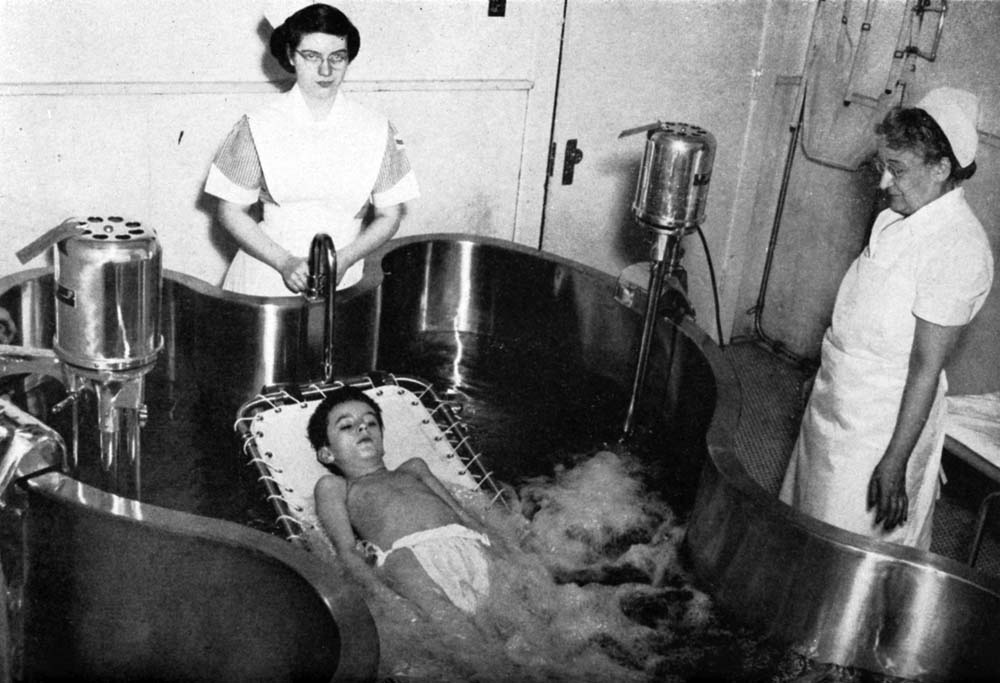
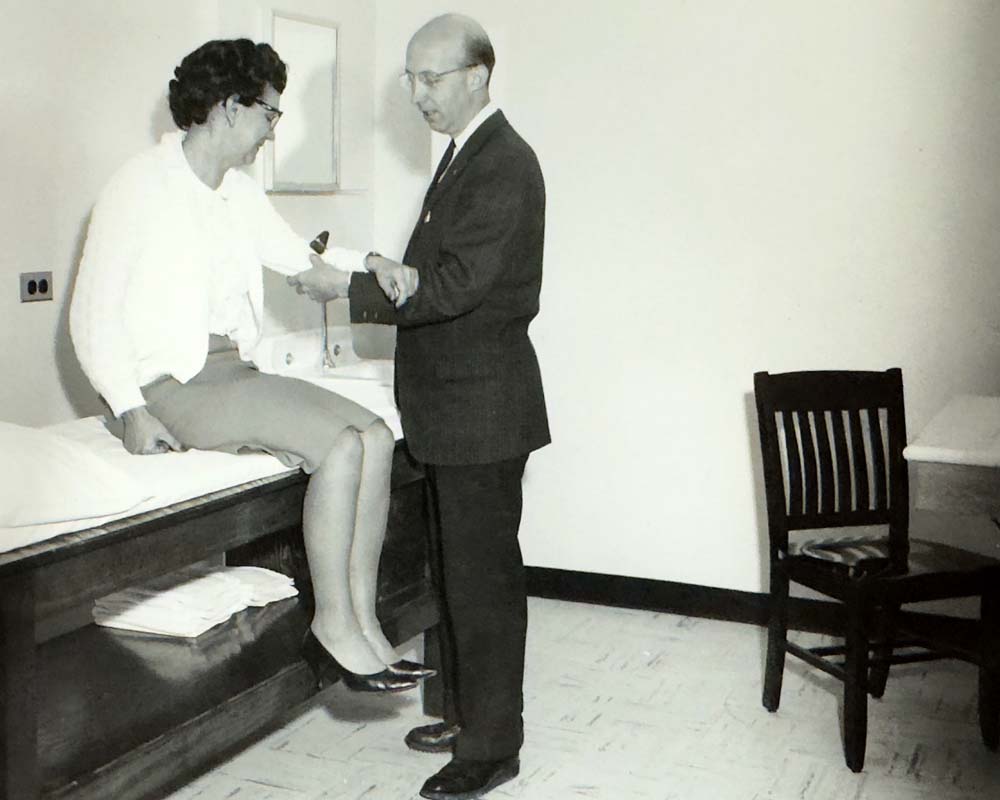
1961 – Orthopedic patient discharge numbers have more than doubled since the inception of the department. Over 9,000 orthopedic outpatient visits were made this year.
1962 – A new wing is built in the hospital, and the orthopedic department moves to a new space consisting of 11 exam rooms, a special room for the application and removal of casts, and an X-ray room.
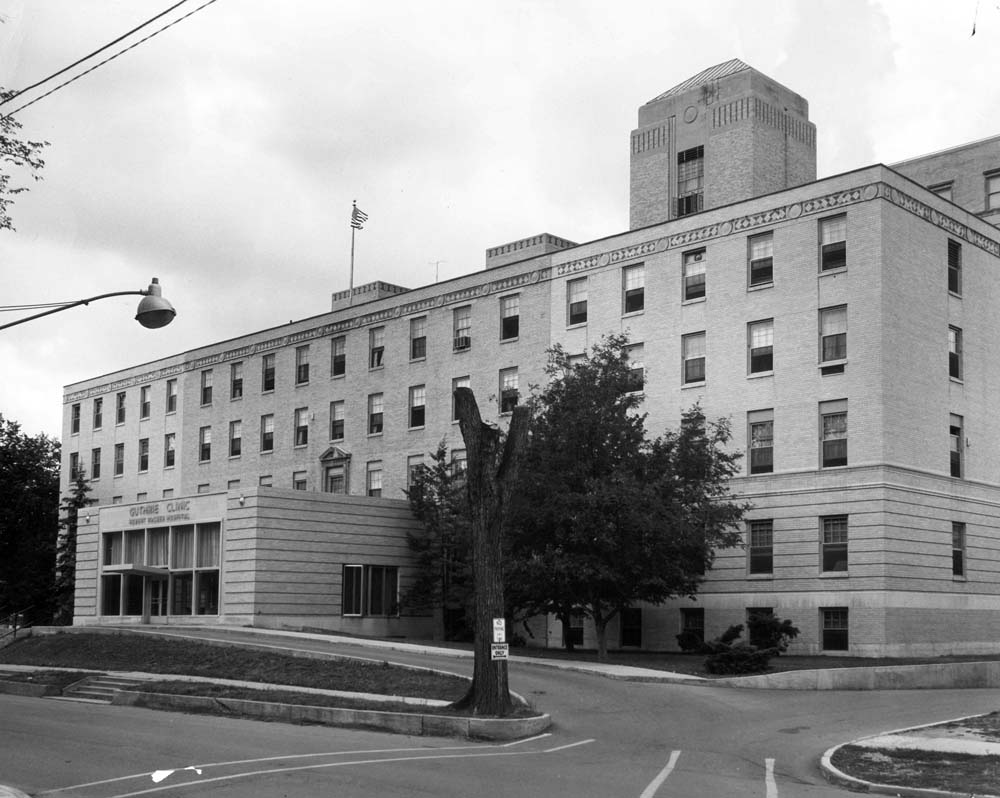
1969 – The first joint replacement is performed at Guthrie – of a hand joint.
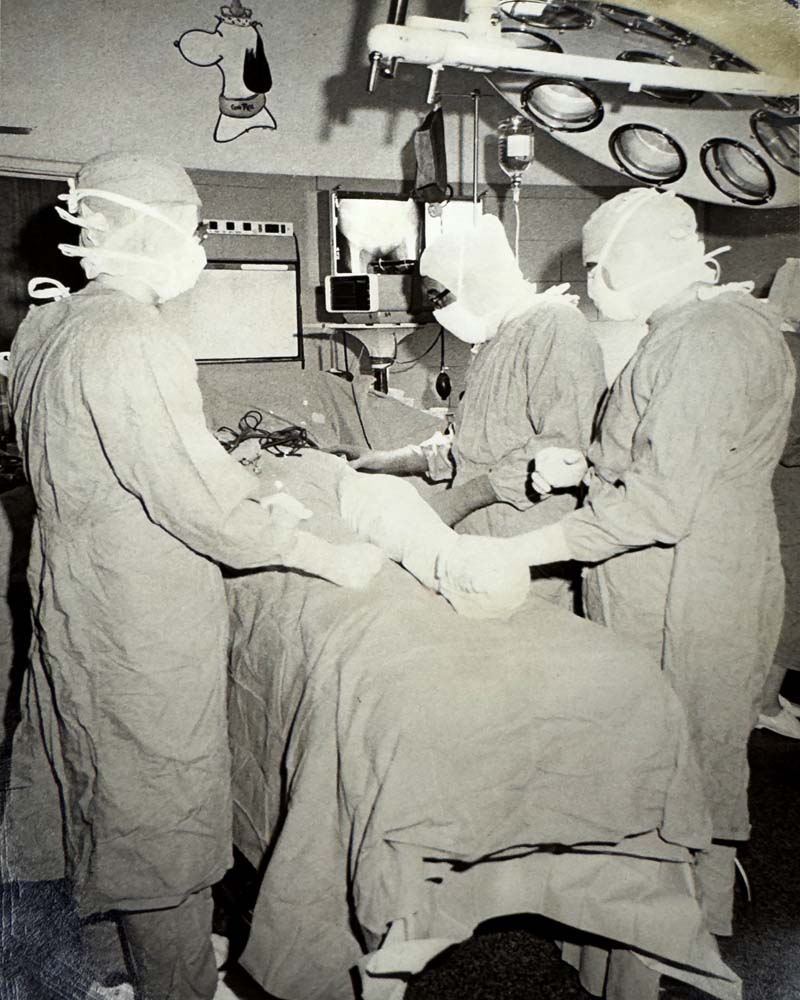
1972 – The first hip joint replacement is performed at Guthrie.
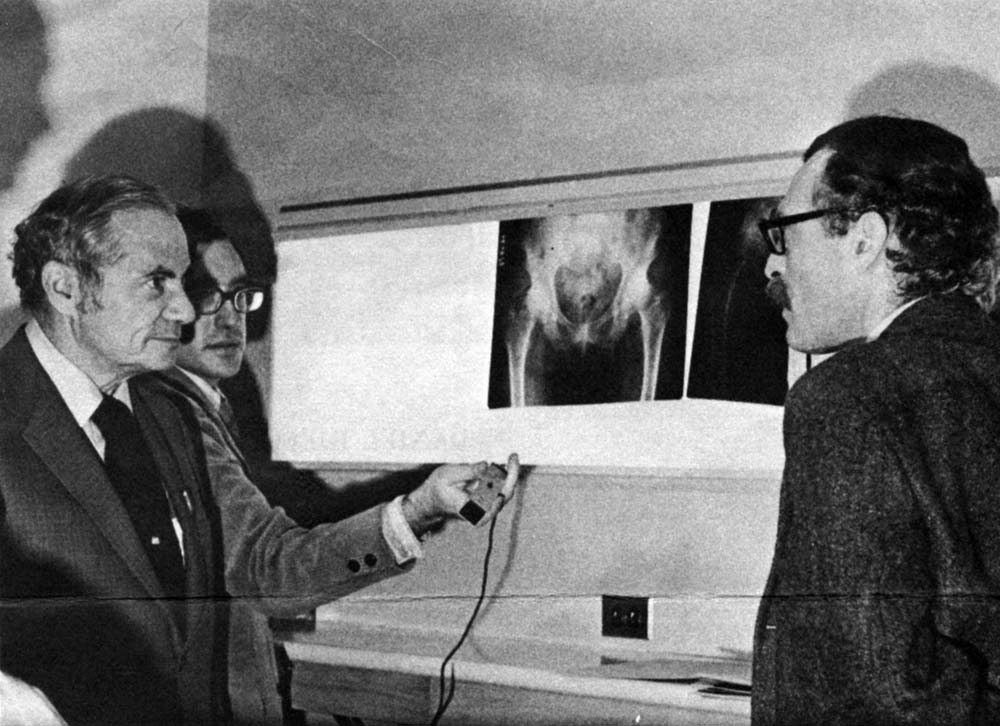
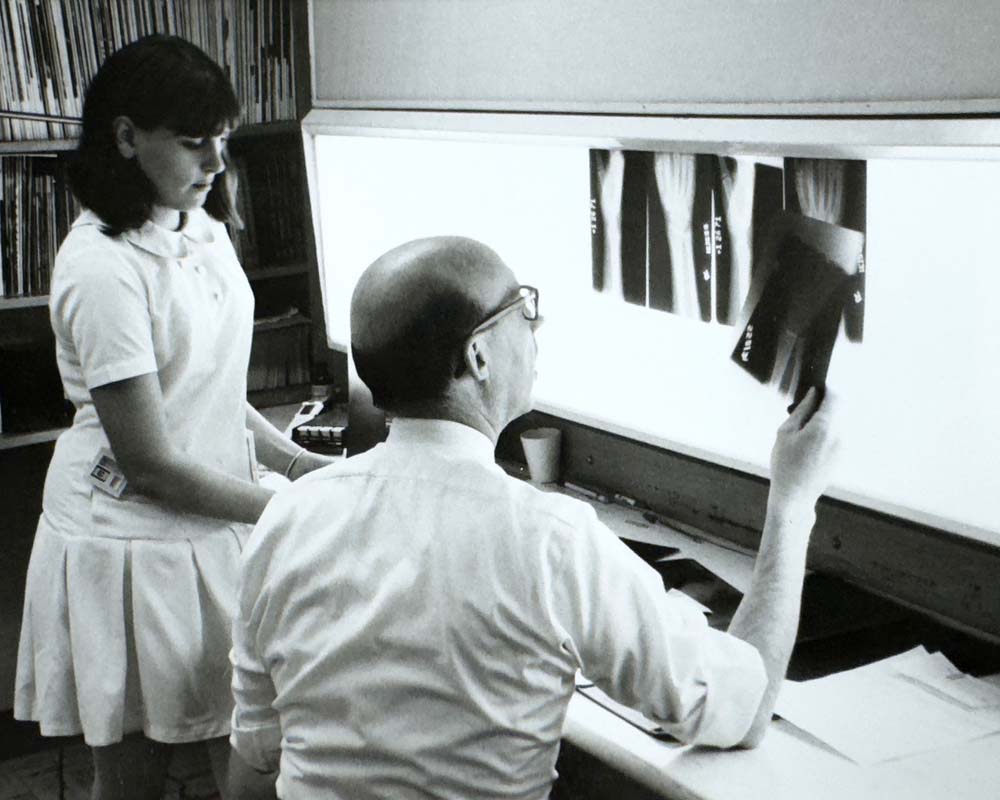
1978 – Roy Wert, MD, becomes chief of the department. Joint replacement procedures start becoming popularized around this time, and Dr. Wert develops a particular passion for this new treatment option.
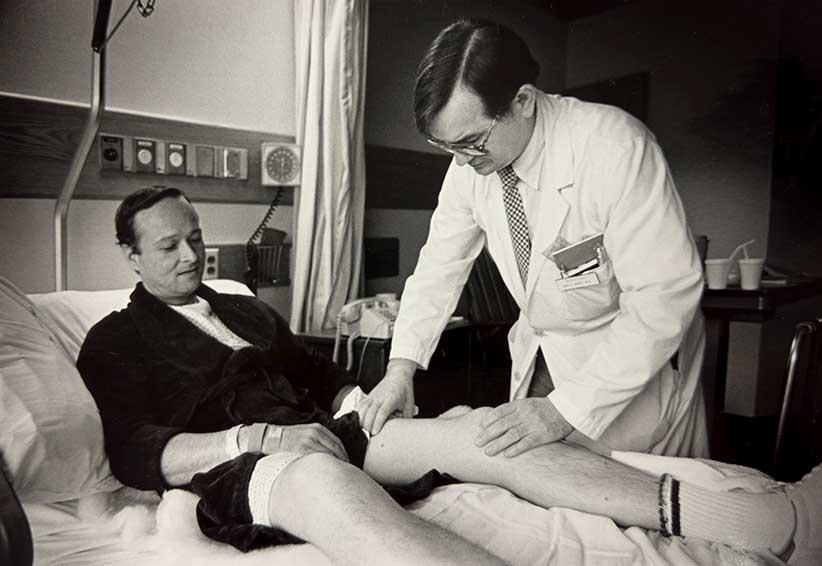
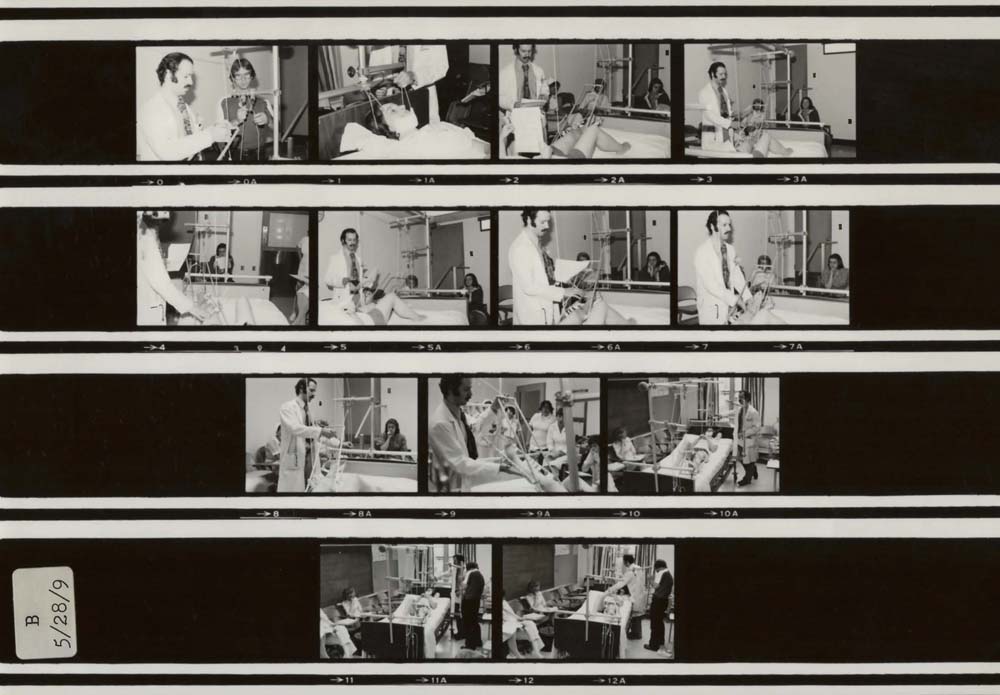
1983 – Dr. Wert publishes a medical review on joint arthroplasty procedures for the shoulder, elbow, wrist, hand, hip, knee, and ankle.
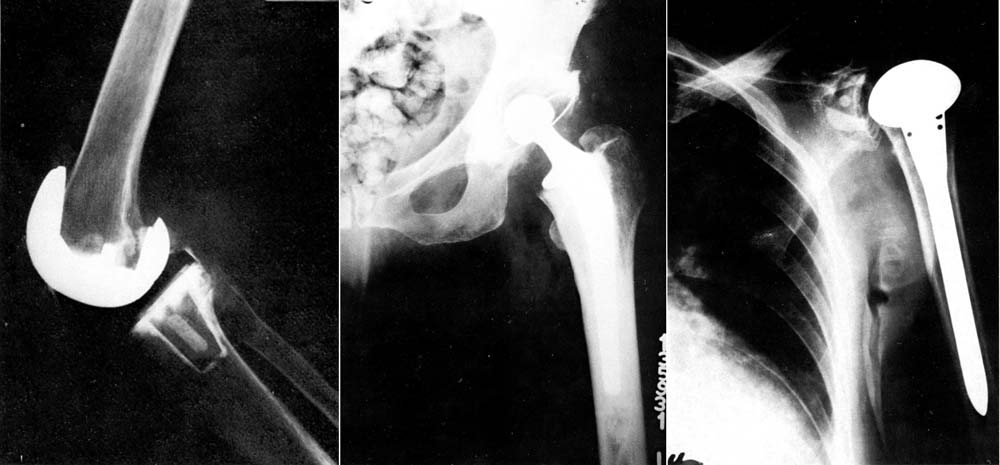
1984 – Former Chief Dr. Dan Baker leads a research study on the progression of spinal conditions in 500 children from the Twin Tiers community. This study becomes foundational in the medical community's understanding of the conditions.
1984 – Hip replacement materials transition to cementless, porous-coated implants.
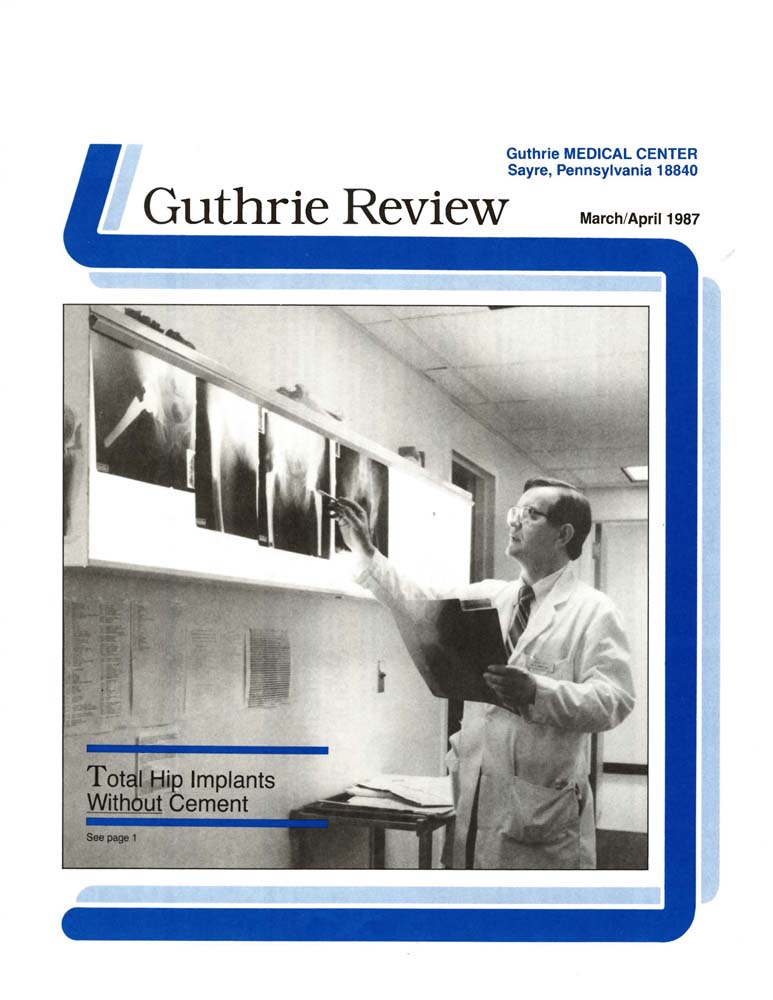
1985 – Guthrie acquires Troy Community Hospital.
1990s – Subspecialization becomes the standard due to the rapid explosion of orthopedic knowledge. Specialties are split between hips, knees, joint replacements, hands and wrists, back, sports medicine, and trauma surgery. Most Guthrie orthopedic surgeons also treat shoulders and elbows at this time.
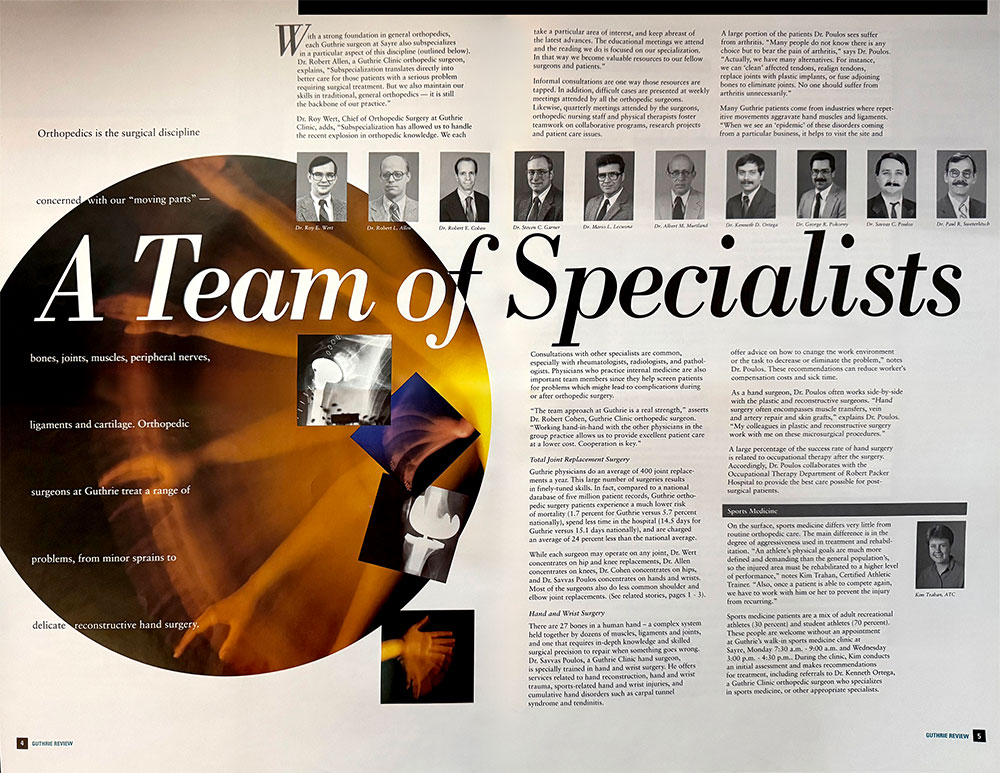
1992 – Guthrie orthopedist Dr. Albert M. Murtland is the only practicing physician invited to share expertise through a testimony before a congressional committee formed to establish guidelines for the treatment of low back problems.
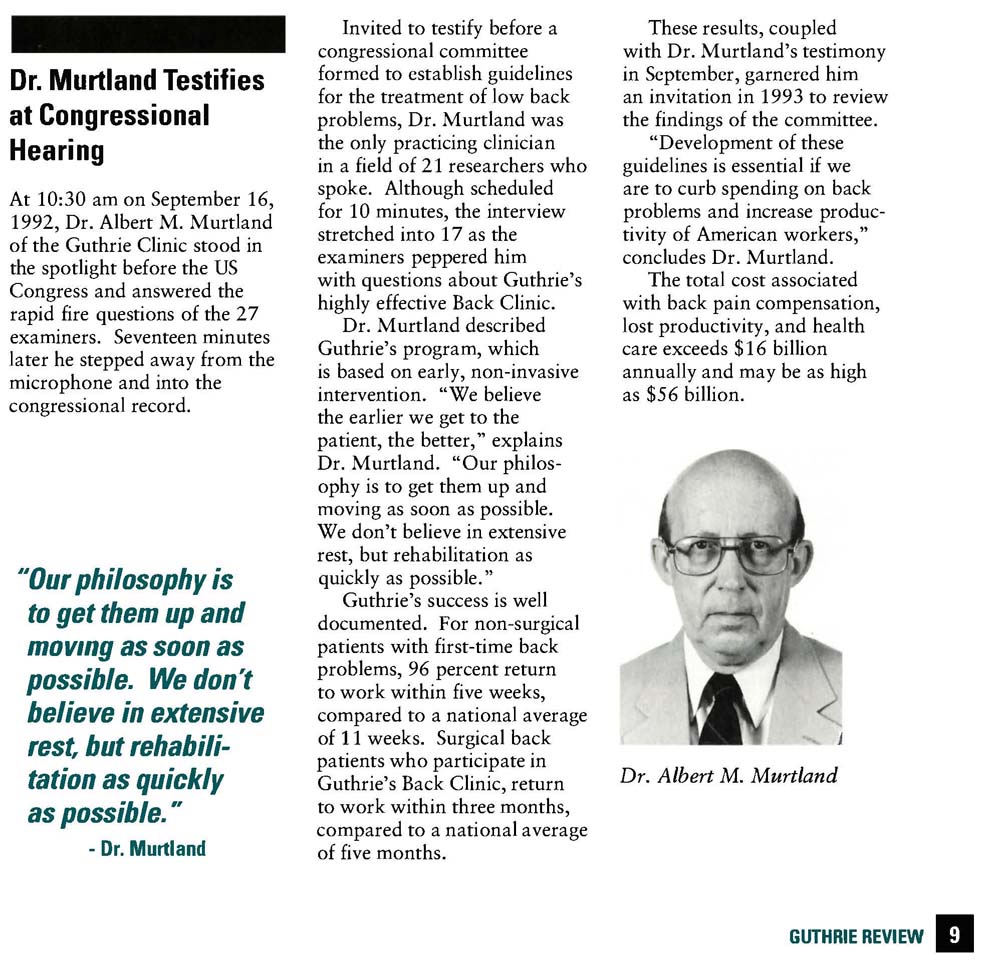
1996 – Robert Cohen, MD, becomes chief.
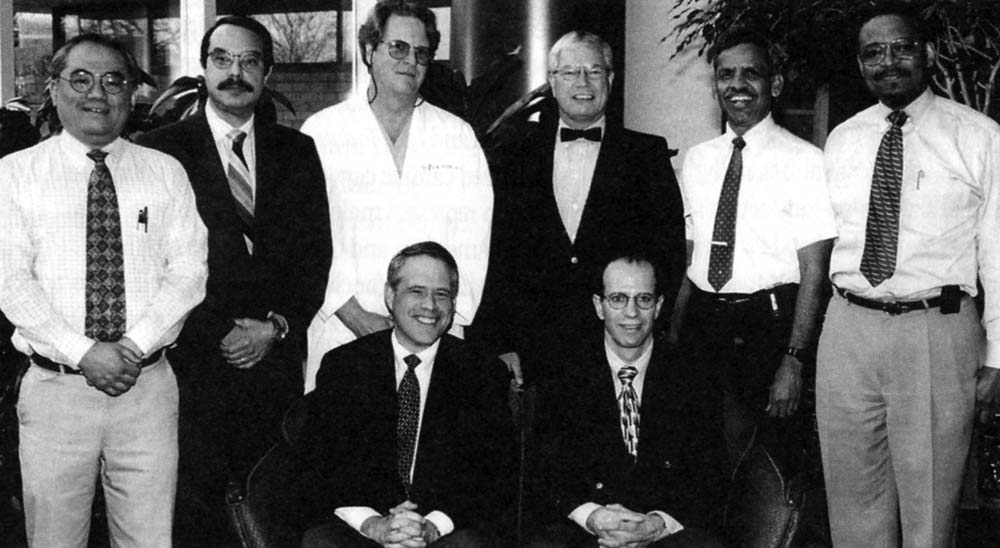
1999 – Guthrie welcomes Corning Hospital.
1999 – Guthrie Joint Camp is launched at Robert Packer Hospital in June, and Corning Hospital in September of the following year. This is a series of educational seminars for patients undergoing joint replacement surgery, helping increase patient and employee satisfaction, quality indicators, clinical results and improve the overall patient experience from preoperative fears to their postoperative successes.
|
Guthrie Joint Camp Introduced Discussed in a July 2001 article of The Guthrie Journal, “After seeing programs in practice at Huntsville Hospital in Huntsville, Alabama and Anne Arundel in Annapolis, Maryland, the team was able to build a program and minimize obstacles other organizations encountered during their implementation. Through these various site visits, practice comparisons, and literature review, the team was able to identify various "Best Practices" to replicate or improve upon in Guthrie's program. The team recognized the importance of a transdisciplinary approach, which created a coordinated and streamlined care across the continuum. Also, early on, it was recognized that this patient population should not be treated like other sick in-patients. In reality these patients were not sick, they were in the hospital for joint replacements). Therefore, the focus was on a wellness approach and an environment of service excellence, which included fun activities. Additionally, the team felt that a strong education process was needed both pre- and postoperatively. This demanded the inclusion of a coach (family member or significant other) in the entire care process. The process educated the patient and the patient's coach in their responsibilities for the six weeks preoperatively to three months postoperatively. Likewise, a structured rehabilitation program was established to work with the patient and coach from six weeks preoperative to three months postoperative. Finally, our clinical pharmacist developed best practice methods for pharmaceutical management of antibiotic prophylaxis, embolic prophylaxis, pain prevention, and pain management.” |
2000s – Joint replacements start becoming outpatient procedures.
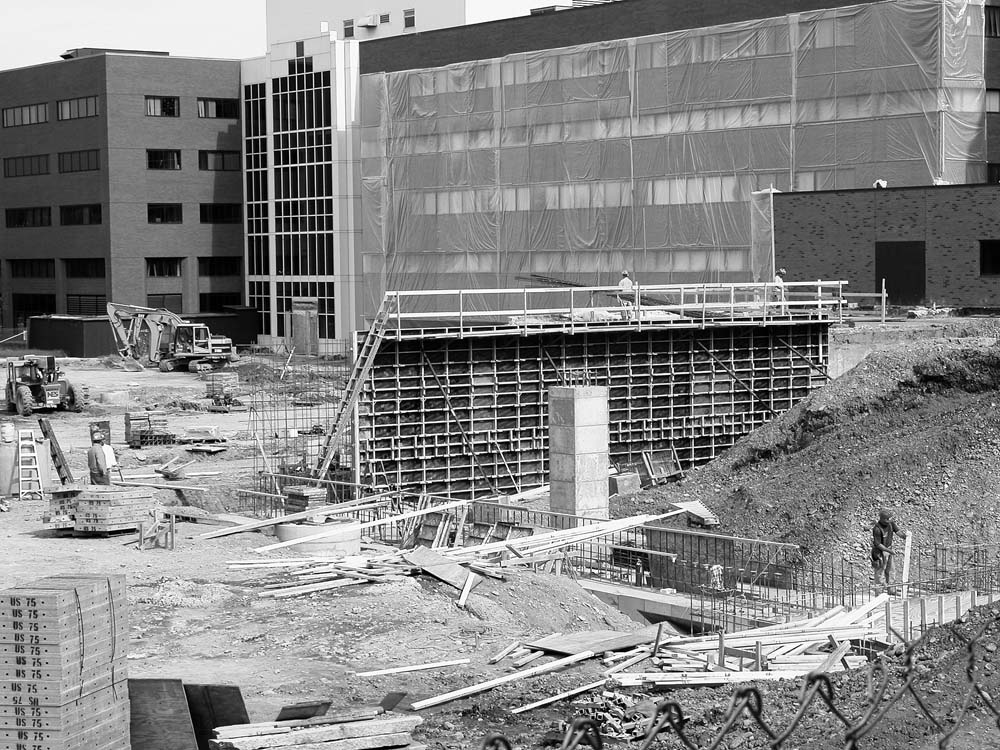
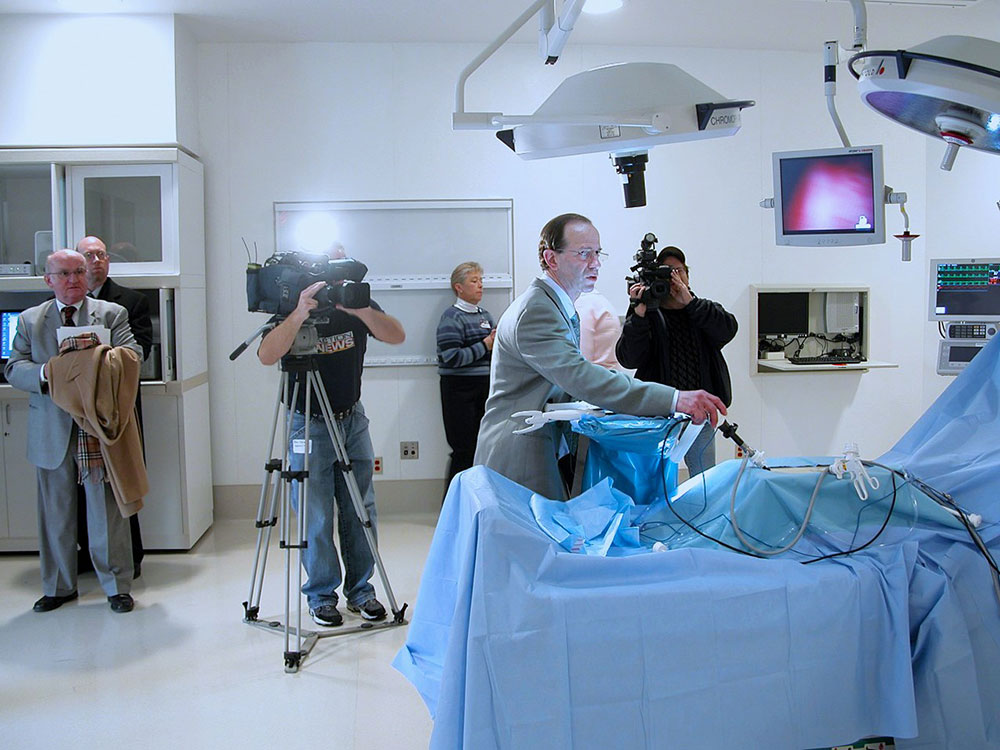
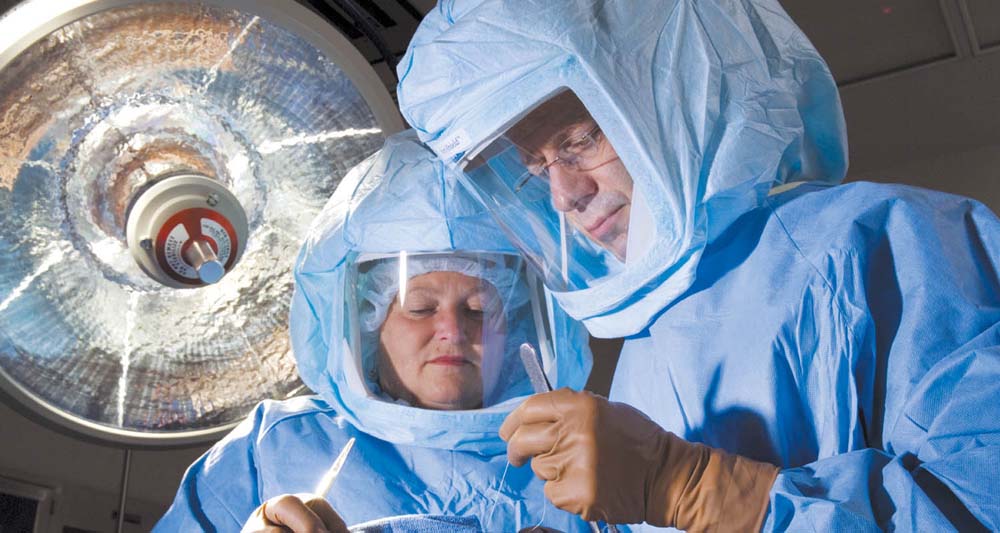
2013 – William Ward, MD, becomes chief.
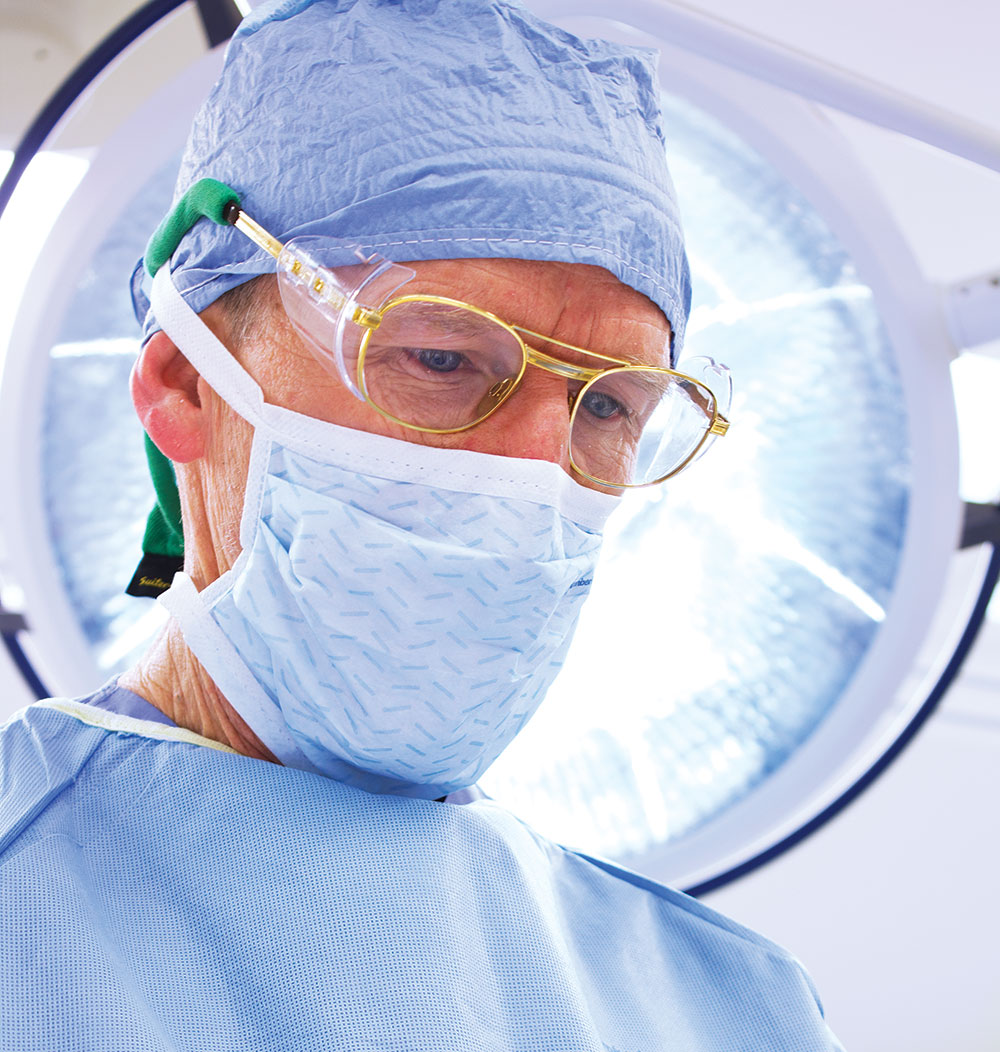
2015 – Towanda Memorial Hospital joins the Guthrie family.
2016 – Joseph Y. Choi, MD, PhD, MHA, becomes chair of the department.
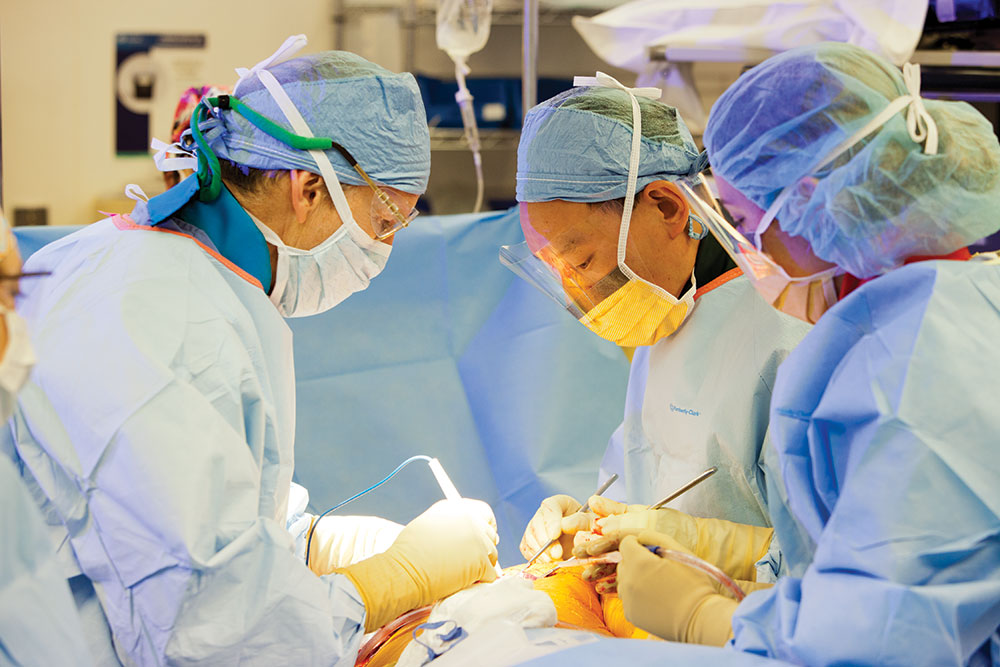
2017 – Robotic-assisted surgical technology is introduced at Guthrie Corning Hospital for partial knee replacement.
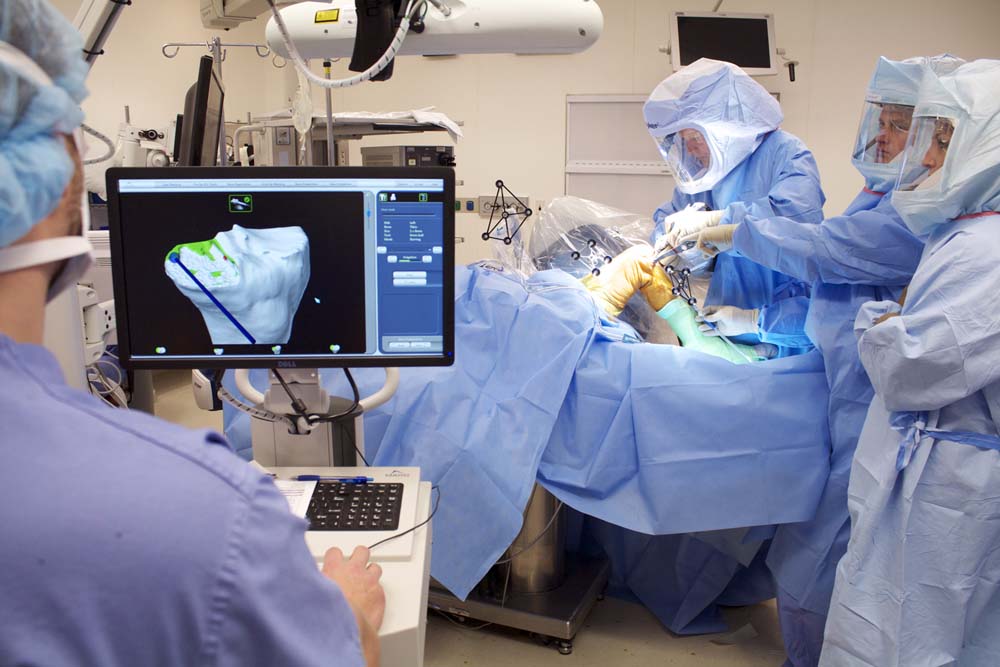
2019 – Guthrie welcomes Guthrie Cortland Medical Center, further expanding the orthopedic team.
2021 – Guthrie Robert Packer Hospital’s five-year orthopaedic surgery residency program is introduced under Dr. Choi’s leadership.
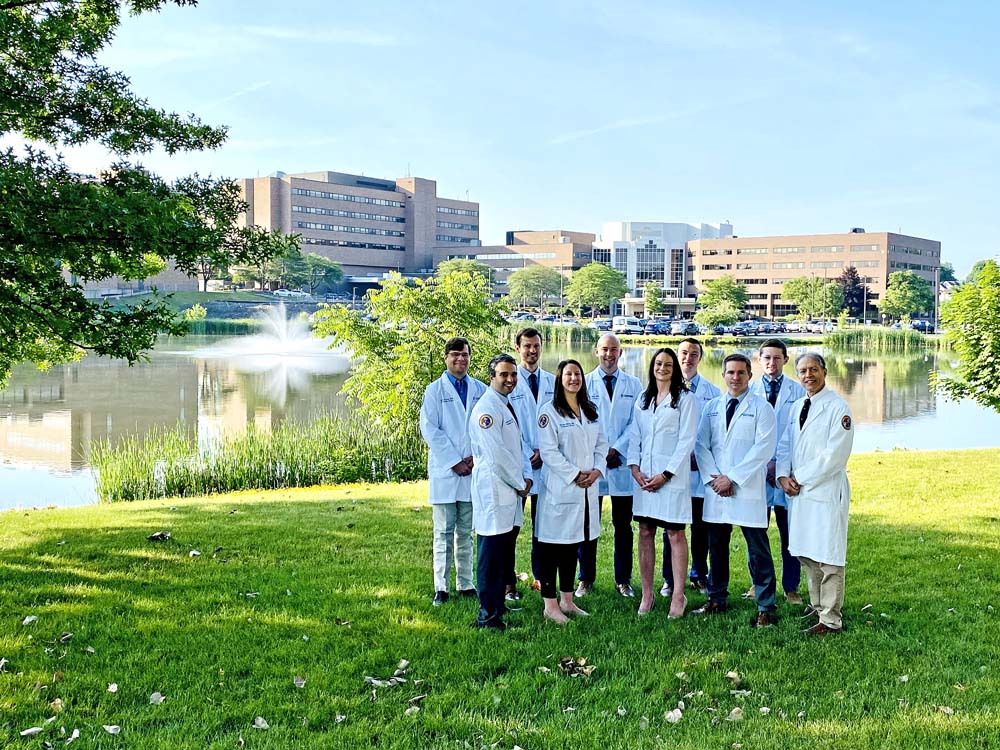
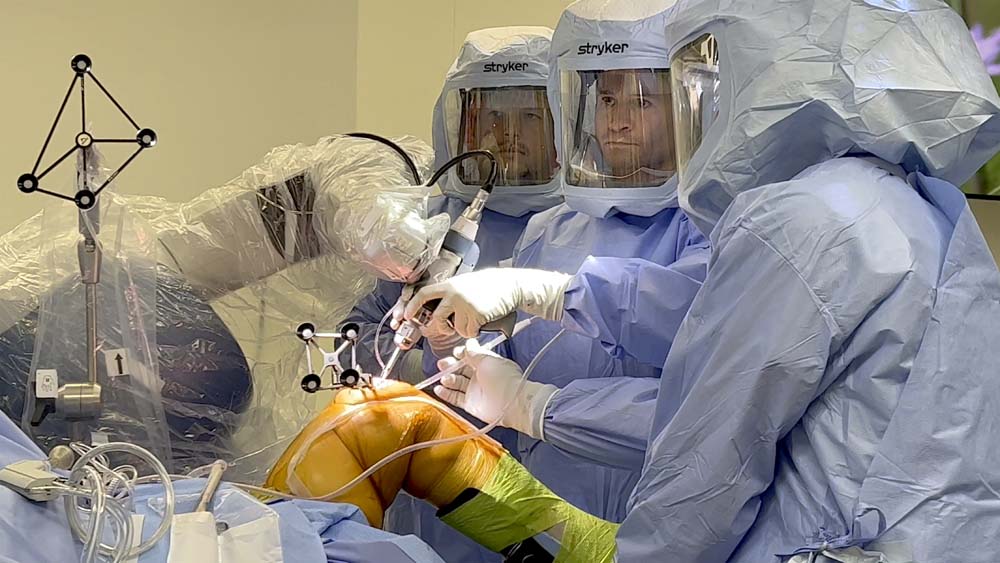
2022 – Orthopedic walk-in clinic opens in Big Flats.
2023 – Guthrie Robert Packer Hospital is accredited as a Level I Trauma Center, in part due to the presence of our orthopedic trauma surgeons.
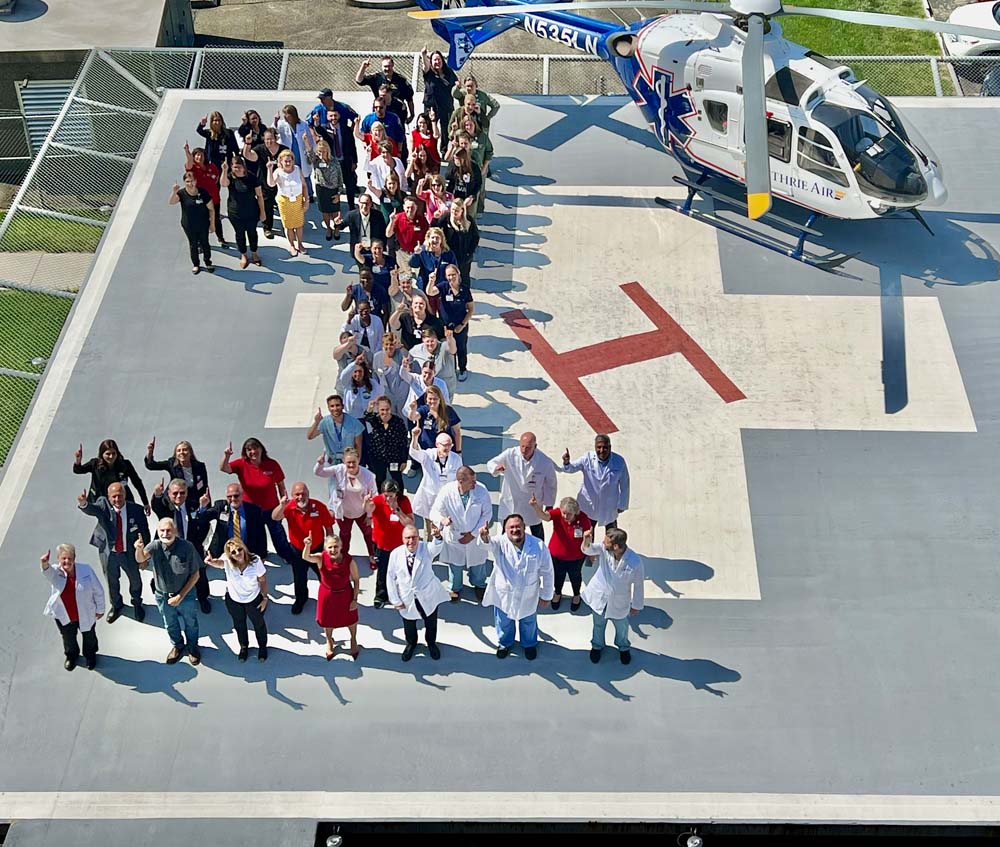
2024 – Guthrie welcomes Guthrie Lourdes Hospital, along with a best-in-state orthopedic program.
2024 – Department named in Becker's Hospital Review "100 Hospitals and Health Systems with Great Orthopedic Programs" list.
2025 – The Guthrie Robert Packer Hospital Orthopaedic Surgery Residency program will graduate its first group since the original program.

